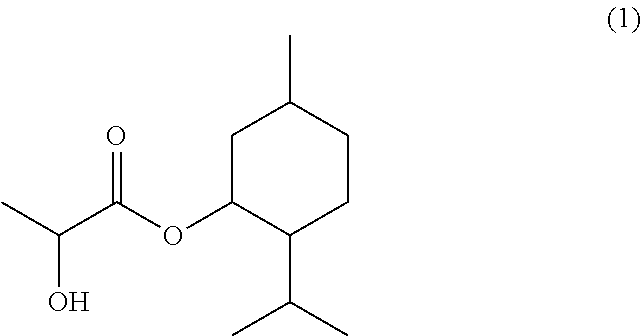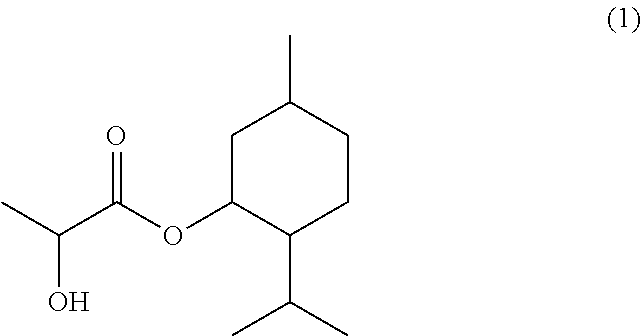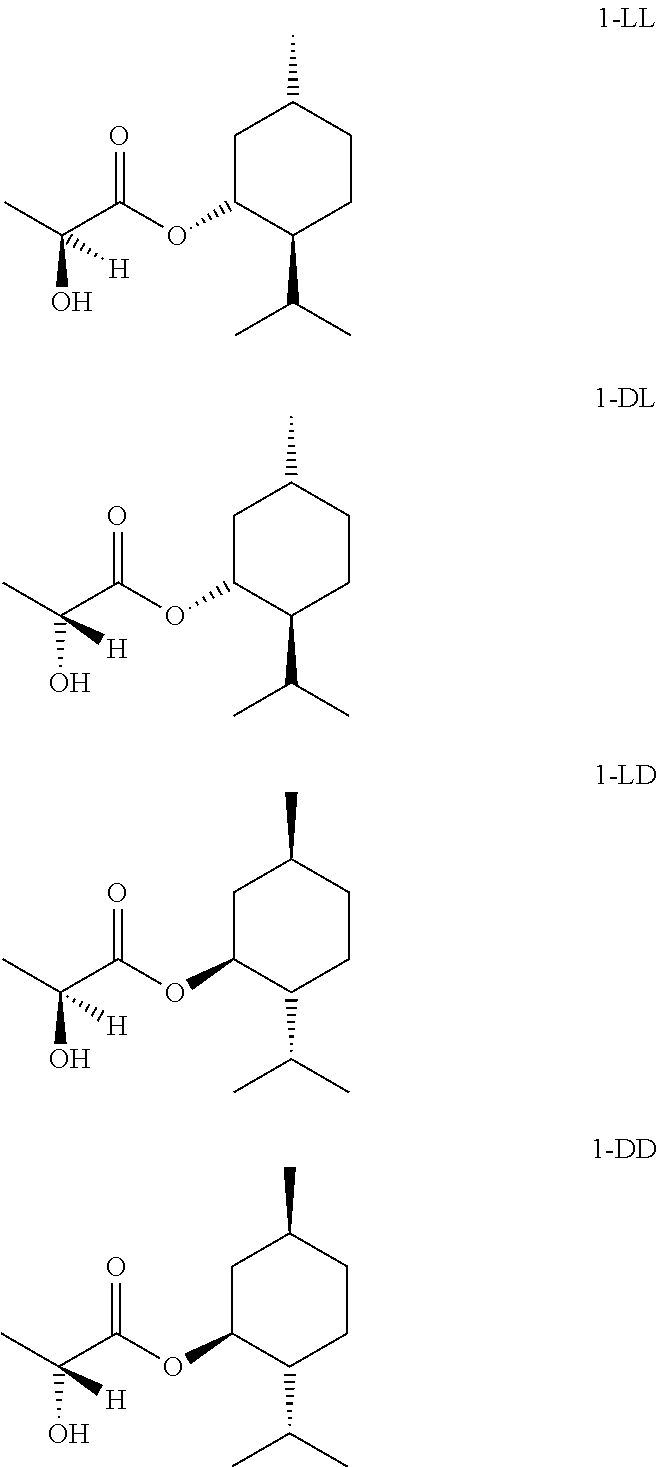Preparations for oral consumption
- Summary
- Abstract
- Description
- Claims
- Application Information
AI Technical Summary
Benefits of technology
Problems solved by technology
Method used
Image
Examples
example 1
Reducing the Astringency Over Time of Epigallocatechin Gallate
[0128]In order to evaluate different attributes of a sample simultaneously over a particular period of time, the method of so-called “multiple time-intensity profiling” (mITP) was used. This descriptive method combines the advantages of the “dual-attribute time-intensity” (DATI) method, in which the intensities of two descriptors can be plotted on a two-dimensional plane, and the “time-intensity profiling” (TIP) method, in which more than two descriptors are evaluated in succession over time.
[0129]In each mTIP test, trained panellists (n=15) are asked to take 2 mouthfuls (each 5 ml) of the sample to be evaluated, to wet the entire oral cavity therewith, and then to spit the sample out again. Measurement begins by marking the intensities of a plurality of descriptors on horizontal linear scales, which are displayed on the computer screen. A linear scale is displayed for each descriptor. A parallel evaluation of more than t...
application example 1
[0131]Various liquid flavour compositions are given in Table 2. The substances or solutions were mixed in the ratios indicated below and then taken up in propylene glycol or ethanol, dissolved completely by gentle heating and mixed homogeneously.
TABLE 2Formulation examplesPreparation (amount used in wt. %)IngredientABCDEFGHFrescolat ® ML10.61 0.551.9510.251.6Hesperetin2——2————Symrise sugar flavour in 1,2- 1.54 ——2 —0.3 —propylene glycolSymrise milk flavour in 1,2-———4————propylene glycolSymrise cream flavour in——3 0.30.5 51 2.51,2-propylene glycol1,2-Propylene glycolad 100—ad 100ad 100ad 100ad 100—ad 100Ethanol—ad 100————ad 100—
application example 2
[0132]Various dry flavour compositions are given in Table 3. The substances were mixed in the ratios indicated below and mixed homogeneously with the solid carriers.
TABLE 3Formulation examplesPreparation (amount used in wt. %)IngredientABCDEFGHFrescolat ® ML25150.5 1 1 0.25 1.2 6Approx. 10 wt. % pellitorine———————10in solution 1,2-propyleneglycolApprox. 10 wt. % homo-——35 50451513 20eriodictiol spray-driedApprox. 10 wt. % hesperetin————10106—spray-driedSymrise rounding-out——1 —30 5——flavour for tea spray-driedSymrise sugar flavour in 8 50.5—————triacetinSymrise vanilla spray-dried——————310Dextrose anhydrous—ad 100———ad 100——Maltodextrinad 100—ad 100ad 100ad 100—ad 100ad 100
PUM
| Property | Measurement | Unit |
|---|---|---|
| Dimensionless property | aaaaa | aaaaa |
| Weight ratio | aaaaa | aaaaa |
Abstract
Description
Claims
Application Information
 Login to View More
Login to View More - R&D
- Intellectual Property
- Life Sciences
- Materials
- Tech Scout
- Unparalleled Data Quality
- Higher Quality Content
- 60% Fewer Hallucinations
Browse by: Latest US Patents, China's latest patents, Technical Efficacy Thesaurus, Application Domain, Technology Topic, Popular Technical Reports.
© 2025 PatSnap. All rights reserved.Legal|Privacy policy|Modern Slavery Act Transparency Statement|Sitemap|About US| Contact US: help@patsnap.com



